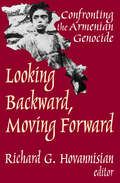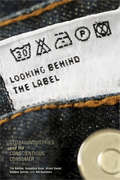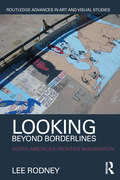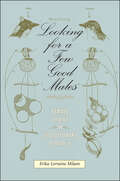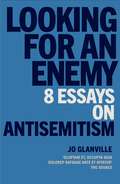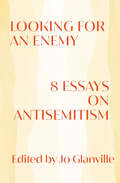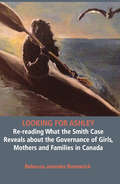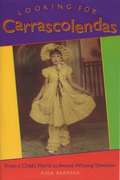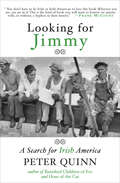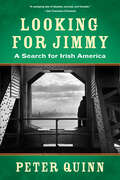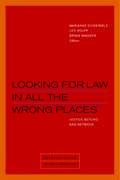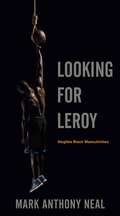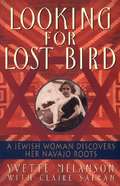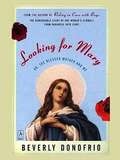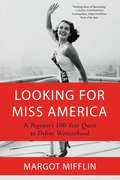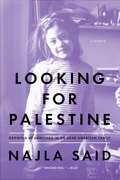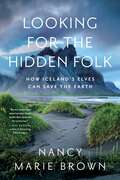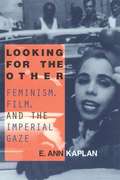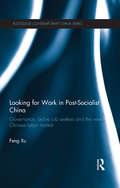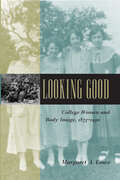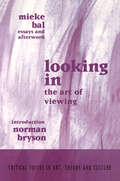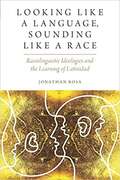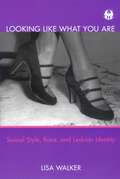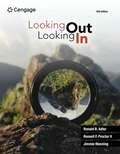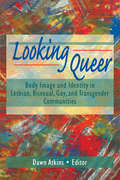- Table View
- List View
Looking Backward, Moving Forward: Confronting the Armenian Genocide
by Richard G. HovannisianThe decades separating our new century from the Armenian Genocide, the prototype of modern-day nation-killings, have fundamentally changed the political composition of the region. Virtually no Armenians remain on their historic territories in what is today eastern Turkey. The Armenian people have been scattered about the world. And a small independent republic has come to replace the Armenian Soviet Socialist Republic, which was all that was left of the homeland as the result of Turkish invasion and Bolshevik collusion in 1920. One element has remained constant. Notwithstanding the eloquent, compelling evidence housed in the United States National Archives and repositories around the world, successive Turkish governments have denied that the predecessor Young Turk regime committed genocide, and, like the Nazis who followed their example, sought aggressively to deflect blame by accusing the victims themselves.This volume argues that the time has come for Turkey to reassess the propriety of its approach, and to begin the process that will allow it move into a post-genocide era. The work includes "Genocide: An Agenda for Action," Gijs M. de Vries; "Determinants of the Armenian Genocide," Donald Bloxham; "Looking Backward and Forward," Joyce Apsel; "The United States Response to the Armenian Genocide," Simon Payaslian; "The League of Nations and the Reclamation of Armenian Genocide Survivors," Vahram L. Shemmassian; "Raphael Lemkin and the Armenian Genocide," Steven L. Jacobs; "Reconstructing Turkish Historiography of the Armenian Massacres and Deaths of 1915," Fatma Muge Go;cek; "Bitter-Sweet Memories; "The Armenian Genocide and International Law," Joe Verhoeven; "New Directions in Literary Response to the Armenian Genocide," Rubina Peroomian; "Denial and Free Speech," Henry C. Theriault; "Healing and Reconciliation," Ervin Staub; "State and Nation," Raffi K. Hovannisian.
Looking behind the Label
by Gustavo Setrini Tim Bartley Sebastian Koos Hiram Samel Nik SummersWhat does it mean when consumers "shop with a conscience" and choose products labeled as fair or sustainable? Does this translate into meaningful changes in global production processes? To what extent are voluntary standards implemented and enforced, and can they really govern global industries? Looking behind the Label presents an informative introduction to global production and ethical consumption, tracing the links between consumers' choices and the practices of multinational producers and retailers. Case studies of several types of products--wood and paper, food, apparel and footwear, and electronics--are used to reveal what lies behind voluntary rules and to critique predominant assumptions about ethical consumption as a form of political expression.
Looking Beyond Borderlines: North America's Frontier Imagination (Routledge Advances in Art and Visual Studies)
by Lee RodneyAmerican territorial borders have undergone significant and unparalleled changes in the last decade. They serve as a powerful and emotionally charged locus for American national identity that correlates with the historical idea of the frontier. But the concept of the frontier, so central to American identity throughout modern history, has all but disappeared in contemporary representation while the border has served to uncomfortably fill the void left in the spatial imagination of American culture. This book focuses on the shifting relationship between borders and frontiers in North America, specifically the ways in which they have been imaged and imagined since their formation in the 19th century and how tropes of visuality are central to their production and meaning. Rodney links ongoing discussions in political geography and visual culture in new ways to demonstrate how contemporary American borders exhibit security as a display strategy that is resisted and undermined through a variety of cultural practices.
Looking for a Few Good Males: Female Choice in Evolutionary Biology (Animals, History, Culture)
by Erika L. Milam2010 Outstanding Academic Title, Choice MagazineWhy do female animals select certain mates, and how do scientists determine the answer? In considering these questions, Erika Lorraine Milam explores the fascinating patterns of experiment and interpretation that emerged as twentieth-century researchers studied sexual selection and female choice. Approaching the topic from both biological and animal-studies perspectives, Milam not only presents a broad history of sexual selection—from Darwin to sociobiology—but also analyzes the animal-human continuum from the perspectives of sex, evolution, and behavior. She asks how social and cultural assumptions influence human-animal research and wonders about the implications of gender on scientific outcomes. Although female choice appears to be a straightforward theoretical concept, the study of sexual selection has been anything but simple. Scientists in the early twentieth century investigated female choice in animals but did so with human social and sexual behavior as their ultimate objective. By the 1940s, evolutionary biologists and population geneticists shifted their focus, studying instead how evolution affected natural animal populations. Two decades later, organismal biologists once again redefined the investigation of sexual selection as sociobiology came to dominate the discipline.Outlining the ever-changing history of this field of study, Milam uncovers lost mid-century research programs and finds that the discipline did not languish in the decades between Darwin’s theory of sexual selection and sociobiology, as observers commonly believed. Rather, population geneticists, ethologists, and organismal biologists alike continued to investigate this important theory throughout the twentieth century.
Looking for an Enemy: 8 Essays on Antisemitism
by Jo Glanville<p>"Like all the best meetings of Jewish minds, this book will make you think, argue and see the world anew." Hadley Freeman, author of House of Glass<p> <p>Conspiracy theories about Jews are back in the mainstream. The Pittsburgh gunman who murdered 11 people in a synagogue claimed that 'filthy evil' Jews were bringing 'filthy evil' Muslims into America. The billionaire philanthropist George Soros has been accused of supporting 'white genocide'. Labour Party members have claimed that Israel is behind ISIS.<p> <p>The belief that Jews are plotting against society never dies, it just adapts to suit the times: from medieval accusations that Jews murder Christians for their blood to claims that Zionists are seeking to control the world.<p> <p>In eight short essays, edited by Jo Glanville, this book goes back to the source of the conspiracy theories and traces their journey into the 21st century in a bid to make sense of their survival.<p> <p>With contributions from some of the great Jewish writers and thinkers of our time, including Tom Segev, Jill Jacobs and Mikhail Grynberg, this is a fresh take on the roots of antisemitism that explores how an irrational belief can still flourish in a supposedly rational age.<p>
Looking for an Enemy: 8 Essays on Antisemitism
by Jo GlanvilleGreat Jewish thinkers offer salient historical commentary on the roots of antisemitism and its contemporary resurgence. From medieval accusations that Jews murder Christians for their blood to the far-right conspiracy theories animating present-day political discourse, it’s clear that the belief that Jews are plotting against society never dies—it just adapts to suit the times. In eight illuminating essays from brilliant Jewish writers and thinkers, Looking for an Enemy offers an urgent, profound take on the experience of antisemitism and its historical context. In order to present a nuanced, global understanding of antisemitism, editor Jo Glanville solicited essays from writers across a wide spectrum of ages, political ideologies, and nationalities. American rabbi Jill Jacobs and respected Israeli historian Tom Segev explore the thorny question of antisemitism in politics. British journalist Daniel Trilling investigates how antisemitism drives far-right extremism, while author Philip Spencer rethinks the forms that antisemitism takes on the left. Polish writer Mikolaj Grynberg reflects on a childhood shadowed by the trauma of the Holocaust; journalist Natasha Lehrer and novelist Olga Grjasnowa explore the culture of antisemitism, and the forces behind it, in France and Germany. In her own contribution, Glanville searches for the historical roots of this dangerous hatred. In moving memoir, rich history, and incisive political commentary, these essays navigate the complex differences in each country’s relationship to its Jewish citizens and reveal the contemporary face of antisemitism. Eye-opening and evocative, Looking for an Enemy explores how an irrational belief can still flourish in a supposedly rational age.
Looking for Ashley: Re-reading What the Smith Case Reveals about the Governance of Girls, Mothers and Families in Canada
by Jaremko Rebecca BromwichThe 2007 death by self-induced strangulation in prison of nineteen year old inmate Ashley Smith drew a great deal of public attention. The case gave rise to a shocking verdict of homicide in the 2013 inquest into the cause of her death. In this book, I inquire into questions about of what social problem or phenomenon Ashley Smith is a “case,” and what governmental work is done by prevalent constructions of her as an exemplar. This book performs a critical discourse analysis of figures of Ashley Smith that emerge in her case, looking at those representations as technologies of governance. It argues that the Smith case is read most accurately not as an isolated system failure but an extreme result of routine, everyday brutality, of a society and bureaucracies’ gradual necropolitical successes. It critically analyzes how representations of Ashley in the case leave intact, and even reinforce, logics and systems governing gender, motherhood, security, risk, race thinking and exclusion, in power and knowledge that make it predictable for similar deaths in prison to recur. It argues that, in the logics underlying constructions through which Ashley Smith was celebritized and sacralized, mothers’, girls’ and women’s subjectivities and agencies are made unknowable and even unthinkable while the racialized social boundaries of a white settler society are maintained. This book attempts to intervene in those logics to help make alternative outcomes possible and to take steps towards questioning the raced, classed and heteronormative boundaries of commonly assumed figures of the “noble victim”, “good girl” and “good mother” while supporting the agencies of adolescent girls in actively playing a part in the authoring of their lives.
Looking For Carrascolendas: From a Child's World to Award-Winning Television
by Aida BarreraIf your childhood friends were Agapito, the bombastic, bilingual lion; Campamocha, the fix-it man; Caracoles, the restaurant owner; Uncle Andy, the shoe seller; Berta and Dyana, the life-size dolls; and Señorita Barrera, then you grew up watching Carrascolendas. This award-winning show, which originally aired on PBS in the 1970s and was subsequently broadcast throughout the country in the 1980s and 1990s, was the first Spanish and English children's educational television program broadcast to national audiences in the United States. In this engagingly written memoir, creator-producer Aida Barrera describes how the mythical world of Carrascolendas grew out of her real-life experiences as a Mexican American child growing up in the Valley of South Texas. She recalls how she drew on those early experiences to create television programming that specifically addressed the needs of Hispanic children, even as it remained accessible and entertaining to children of other cultural backgrounds. In addition to her personal story, Barrera recounts the long-term struggles for network acceptance and funding that made the production of Carrascolendas something of a miracle. This off-camera story adds an important chapter to the history of Anglo-Mexican cultural politics during the 1970s. Given the fact that Latino characters are still under- and stereotypically represented on network television, Carrascolendas remains an important reminder of what is possible and what has been lost in authentically multicultural television programming. An award-winning television producer with extensive experience in broadcasting, public policy, and education, Aida Barrera was the creator, executive producer, and project director of Carrascolendas. She lives in Austin, Texas.
Looking for Jimmy: A Search for Irish America
by Peter Quinn“[An] exceptionally thoughtful and interesting inquiry into Irish America . . . More a meditation than a history” from the acclaimed author of Dry Bones (The Washington Post). In the hands of historical novelist and speechwriter Peter Quinn, the Irish stereotype of “Paddy” gives way to an image of “Jimmy”—an archetypal Irish American (a composite of Jimmy Cagney and Jimmy Walker) who comes to life as a fast-talking, tough-yet-refined urban American redefining US politics, street culture, religion, and imagination. From immigrating to the United States to modern day politics, Quinn’s vibrant prose weaves together the story of a people that has made an immeasurable contribution to American history and culture. “Entertaining and informative . . . There are portraits of the Irish as politician, cop, priest, teacher, writer. In this deft examination of America’s Irish, Quinn adds color and nostalgia with his tales of growing up and working in the Bronx of another time.” —Publishers Weekly “You don’t have to be Irish or Irish-American to love this book. Whoever you are, you are in it. This is the kind of book you will want to bestow on anyone with, or without, a hyphen in their history.” —Frank McCourt, Pulitzer Prize–winning author of Angela’s Ashes “Well written and researched, showcasing the author’s pride in his Irish Catholic heritage.” —Kirkus Reviews
Looking for Jimmy: A Search For Irish America
by Peter QuinnIn this stunning work chronicling the author’s exploration of his own past—and the lives of many hundreds of thousands of nameless immigrants who struggled alongside his own ancestors—Peter Quinn paints a brilliant new portrait of the Irish-American men and women whose evolving culture and values continue to play such a central role in all of our identities as Americans. In Quinn’s hands, the Irish stereotype of “Paddy” gives way to an image of “Jimmy”—an archetypal Irish-American. From Irish immigration to modern politics, Quinn vibrantly weaves together the story of a remarkable people and their immeasurable contribution to American history and culture.
Looking for Law in All the Wrong Places: Justice Beyond and Between (Berkeley Forum in the Humanities)
by Rebecca M. McLennan Samera Esmeir Daniel Fisher Bath H. Piatote Sarah Song Saba Mahmood Wendy Brown Daniel Boyarin Sara Ludin Christopher Tomlins Kathryn Abrams Ramona NaddaffFor many inside and outside the legal academy, the right place to look for law is in constitutions, statutes, and judicial opinions. This book looks for law in the “wrong places”—sites and spaces in which no formal law appears. These may be geographic regions beyond the reach of law, everyday practices ungoverned or ungovernable by law, or works of art that have escaped law’s constraints.Looking for Law in All the Wrong Places brings together essays by leading scholars of anthropology, cultural studies, history, law, literature, political science, race and ethnic studies, religion, and rhetoric, to look at law from the standpoint of the humanities. Beyond showing law to be determined by or determinative of distinct cultural phenomena, the contributors show how law is itself interwoven with language, text, image, and culture.Many essays in this volume look for law precisely in the kinds of “wrong places” where there appears to be no law. They find in these places not only reflections and remains of law, but also rules and practices that seem indistinguishable from law and raise challenging questions about the locations of law and about law’s meaning and function. Other essays do the opposite: rather than looking for law in places where law does not obviously appear, they look in statute books and courtrooms from perspectives that are usually presumed to have nothing to say about law.Looking at law sideways, or upside down, or inside out defamiliarizes law. These essays show what legal understanding can gain when law is denied its ostensibly proper domain.Contributors: Kathryn Abrams, Daniel Boyarin, Wendy Brown, Marianne Constable, Samera Esmeir, Daniel Fisher, Sara Ludin, Saba Mahmood, Rebecca McLennan, Ramona Naddaff, Beth Piatote, Sarah Song, Christopher Tomlins, Leti Volpp, Bryan Wagner
Looking for Leroy: Illegible Black Masculinities (Postmillennial Pop #4)
by Mark Anthony NealMark Anthony Neal’s Looking for Leroy is an engaging and provocative analysis of the complex ways in which black masculinity has been read and misread through contemporary American popular culture. Neal argues that black men and boys are bound, in profound ways, to and by their legibility. The most “legible” black male bodies are often rendered as criminal, bodies in need of policing and containment. Ironically, Neal argues, this sort of legibility brings welcome relief to white America, providing easily identifiable images of black men in an era defined by shifts in racial, sexual, and gendered identities. Neal highlights the radical potential of rendering legible black male bodies—those bodies that are all too real for us—as illegible, while simultaneously rendering illegible black male bodies—those versions of black masculinity that we can’t believe are real—as legible. In examining figures such as hip-hop entrepreneur and artist Jay-Z, R&B Svengali R. Kelly, the late vocalist Luther Vandross, and characters from the hit HBO series The Wire, among others, Neal demonstrates how distinct representations of black masculinity can break the links in the public imagination that create antagonism toward black men. Looking for Leroy features close readings of contemporary black masculinity and popular culture, highlighting both the complexity and accessibility of black men and boys through visual and sonic cues within American culture, media, and public policy. By rendering legible the illegible, Neal maps the range of identifications and anxieties that have marked the performance and reception of post-Civil Rights era African American masculinity.
Looking for Lost Bird: A Jewish Woman Discovers Her Navajo Roots
by Yvette D. Melanson Claire SafranIn this haunting memoir, Yvette Melanson tells of being raised to believe that she was white and Jewish. At age forty-three, she learned that she was a "Lost Bird," a Navajo child taken against her family's wishes, and that her grieving birth mother had never stopped looking for her until the day she died... This is the story of her learning who she is.
Looking for Miss America: A Pageant's 100-Year Quest to Define Womanhood
by Margot MifflinFrom an author praised for writing “delicious social history” (Dwight Garner, The New York Times) comes a lively account of memorable Miss America contestants, protests, and scandals—and how the pageant, nearing its one hundredth anniversary, serves as an unintended indicator of feminist progressLooking for Miss America is a fast–paced narrative history of a curious and contradictory institution. From its start in 1921 as an Atlantic City tourist draw to its current incarnation as a scholarship competition, the pageant has indexed women’s status during periods of social change—the post–suffrage 1920s, the Eisenhower 1950s, the #MeToo era. This ever–changing institution has been shaped by war, evangelism, the rise of television and reality TV, and, significantly, by contestants who confounded expectations.Spotlighting individuals, from Yolande Betbeze, whose refusal to pose in swimsuits led an angry sponsor to launch the rival Miss USA contest, to the first black winner, Vanessa Williams, who received death threats and was protected by sharpshooters in her hometown parade, Margot Mifflin shows how women made hard bargains even as they used the pageant for economic advancement. The pageant’s history includes, crucially, those it excluded; the notorious Rule Seven, which required contestants to be “of the white race,” was retired in the 1950s, but no women of color were crowned until the 1980s.In rigorously researched, vibrant chapters that unpack each decade of the pageant, Looking for Miss America examines the heady blend of capitalism, patriotism, class anxiety, and cultural mythology that has fueled this American ritual.
Looking For Palestine: Growing Up Confused In An Arab-American Family
by Najla SaidThe daughter of a prominent Palestinian father and a sophisticated Lebanese mother, Majla Said grew up in New York City, confused and conflicted about her cultural background and identity. But while her father and brother shared a passion for debate about the politics of the Middle East and her mother held on deeply to her Lebanese roots, Said was satisfied to be her father's darling daughter, content with her life on Manhattan's Upper West Side. Her home life was rich and embracing, but outside her apartment she felt entirely unsure about who she was supposed to be, and often in denial of the differences she sensed between her family and those around her. She may have been born a Palestinian Lebanese American, but in her own mind she grew up first as a WASP (baptized Episcopalian in Boston; attending Chapin, the wealthy Upper East Side girls' school), then as a teenage Jew, essentially denying her true roots, even to herself, until well into adulthood. The fact that her father was Edward Said - the famous intellectual, founding father of postcolonial thought, and outspoken advocate for the political and human rights of the Palestinian people - only made things more complicated. Said knew that her parents identified deeply with the countries they had come from, but growing up in a Manhattan world that was defined largely by class and confirmity, where she felt her family was a cultural island all its own, she sought comfort by fitting in with their peers, until, ultimately, the psychological toll of her self-hatred began to threaten her health. As she grew older, and made increased visits to Palestine and Beirut, Said's worldview shifted. The attacks on the World Trade Center, and some of the ways in which Americans responded, finally made it impossible for her to continue to pick and choose her identity, and allowed her to see herself and her passions more clearly. In Looking for Palestine, she shares the journey to this understanding and the experience of growing up in an immigrant family and learning to embrace its cultures. Praise for Looking for Palestine 'Najla Said's Looking for Palestine is a compassionate and candid book on her courageous coming-of-age in contemporary America. Said is a brilliant, talented, and sensitive artist with a larger-than-life, loving father. ' Professor Cornel West' A deeply penetrating, often hilarious, and occasionally devastating account of growing up Arab-American. After finally finding the conviction to be at peace with herself, Najla Said has written more than a memoir. Looking for Palestine is a survivor's guide for all of us who live with that feeling of being out of place wherever we are. ' Moustafa Bayoumi, author of How Does It Feel to Be a Problem? Being Young and Arab in America' thoughtful, searching, and open-eyed, Looking for Palestine takes readers on a journey into an Arab-American girl's search for identity . . . A haunting and singular life story. ' Diana Abu-Jaber, author of Crescent' It can be a difficult story to tell: that of one's discontent in the midst of privilege. And yet with great skill, humor, and poignancy, Said accomplishes just that. In the end, she is her late father's great inheritor, ever journeying toward that elusive home.
Looking for the Hidden Folk: How Iceland's Elves Can Save the Earth
by Nancy Marie BrownIn exploring how Icelanders interact with nature—and their idea that elves live among us—Nancy Marie Brown shows us how altering our perceptions of the environment can be a crucial first step toward saving it.Icelanders believe in elves. Why does that make you laugh?, asks Nancy Marie Brown in this wonderfully quirky exploration of our interaction with nature. Looking for answers in history, science, religion, and art—from ancient times to today—Brown finds that each discipline defines what is real and unreal, natural and supernatural, demonstrated and theoretical, alive and inert. Each has its own way of perceiving and valuing the world around us. And each discipline can be defined, in the Icelandic perception, by its own sort of elf. Illuminated by her own encounters with Iceland&’s Otherworld—in ancient lava fields, on a holy mountain, beside a glacier or an erupting volcano, crossing the cold desert at the island&’s heart on horseback—Looking for the Hidden Folk offers an intimate conversation about how we look at and find value in nature. It reveals how the words we use and the stories we tell shape the world we see. It argues that our beliefs about the Earth will preserve—or destroy it. Scientists name our time the Anthropocene: the Human Age. Climate change will lead to the mass extinction of numerous animal species unless we humans change our course. Iceland suggests a different way of thinking about the Earth, one that offers hope. Icelanders believe in elves— and you should, too.
Looking for the Other: Feminism, Film and the Imperial Gaze
by E. Ann KaplanWhat happens when white people look at non-whites? What happens when the gaze is returned? Looking for the Other responds to criticisms leveled at white feminist film theory of the 1970s and 1980s for its neglect of issues to do with race. It focuses attention on the male gaze across cultures, as illustrated by women filmmakers of color whose films deal with travel. Looking relations are determined by history, tradition, myth; by national identity, power hierarchies, politics, economics, geographical and other environment. Travel implicitly involves looking at, and looking relations with, peoples different from oneself. Featured films include Birth of a Nation, The Cat People, Home of the Brave, Black Narcissus, Chocolat, and Warrior Marks. Featured filmmakers include D.W.Griffith, Jacques Tourneur, Michael Powell, Julie Dash, Pratibha Parmar, Trinh T. Min-ha, and Claire Denis.
Looking for Work in Post-Socialist China: Governance, Active Job Seekers and the New Chinese Labour Market (Routledge Contemporary China Series)
by Feng XuUnemployment is one of the most politically explosive issues in China and has gained further prominence as a result of the present global financial crisis. The novelty, urgency, and complexity of Chinese unemployment have compelled the government to experiment with policy initiatives that originate in the West. This book argues that although China is not a liberal democracy, it has turned to neo-liberal forms of governance to deal with unemployment, which now function alongside pre-existing Chinese modes of governance. This book examines the initiatives which represent China’s attempt to institutionalize and humanize its approach to governance: these initiatives include training programmes; counselling; a web-based national labour-market information network; insurance; and using community (shequ) organizations as the base for new mechanisms of governance and informal job generation. Based on extensive original research including semi-structured interviews, the book discusses the ways in which the government combines the new techniques with old campaign-style policy techniques. The author argues that these multiple modes of governance make the state's power visible in the new Chinese labour market, and at the same time run the risk of policy incoherence or even failure.
Looking Good: College Women and Body Image, 1875-1930 (Gender Relations in the American Experience)
by Margaret A. LoweWinner of the Bridgewater State College Class of 1950 Distinguished Faculty Research Award Toward the end of the nineteenth century, as young women began entering college in greater numbers than ever before, physicians and social critics charged that campus life posed grave hazards to the female constitution and women's reproductive health. "A girl could study and learn," Dr. Edward Clarke warned in his widely read 1873 book Sex in Education, "but she could not do all this and retain uninjured health, and a future secure from neuralgia, uterine disease, hysteria, and other derangements of the nervous system." For half a century, ideas such as Dr. Clarke's framed the debate over a woman's place in higher education almost exclusively in terms of her body and her health.For historian Margaret A. Lowe, this obsession offers one of the clearest expressions of the social and cultural meanings given to the female body between 1875 and 1930. At the same time, the "college girl" was a novelty that tested new ideas about feminine beauty, sexuality, and athleticism. In Looking Good, Lowe examines the ways in which college women at three quite different institutions—Cornell University, Smith College, and Spelman College—regarded their own bodies in this period. Contrasting white and black students, single-sex and coeducational schools, secular and religious environments, and Northern and Southern attitudes, Lowe draws on student diaries, letters, and publications; institutional records; and accounts in the popular press to examine the process by which new, twentieth-century ideals of the female body took hold in America.
Looking In: The Art of Viewing (Critical Voices in Art, Theory and Culture)
by Norman Bryson Mieke BalFirst published in 2001. Routledge is an imprint of Taylor & Francis, an informa company.
Looking Like a Language, Sounding Like a Race: Raciolinguistic Ideologies and the Learning of Latinidad (Oxford Studies in Anthropology of Language Series)
by Jonathan RosaLooking like a Language, Sounding like a Race examines the emergence of linguistic and ethnoracial categories in the context of Latinidad. <p><p>The book draws from more than twenty-four months of ethnographic and sociolinguistic fieldwork in a Chicago public school, whose student body is more than 90% Mexican and Puerto Rican, to analyze the racialization of language and its relationship to issues of power and national identity. It focuses specifically on youth socialization to U.S. Latinidad as a contemporary site of political anxiety, raciolinguistic transformation, and urban inequity. <p><p> Jonathan Rosa's account studies the fashioning of Latinidad in Chicago's highly segregated Near Northwest Side; he links public discourse concerning the rising prominence of U.S. Latinidad to the institutional management and experience of raciolinguistic identities there. <p><p>Anxieties surrounding Latinx identities push administrators to transform "at risk" Mexican and Puerto Rican students into "young Latino professionals." This institutional effort, which requires students to learn to be and, importantly, sound like themselves in highly studied ways, reveals administrators' attempts to navigate a precarious urban terrain in a city grappling with some of the nation's highest youth homicide, dropout, and teen pregnancy rates. Rosa explores the ingenuity of his research participants' responses to these forms of marginalization through the contestation of political, ethnoracial, and linguistic borders.
Looking Like What You Are: Sexual Style, Race, and Lesbian Identity
by Lisa WalkerLooks can be deceiving, and in a society where one's status and access to opportunity are largely attendant on physical appearance, the issue of how difference is constructed and interpreted, embraced or effaced, is of tremendous import. Lisa Walker examines this issue with a focus on the questions of what it means to look like a lesbian, and what it means to be a lesbian but not to look like one. She analyzes the historical production of the lesbian body as marked, and studies how lesbians have used the frequent analogy between racial difference and sexual orientation to craft, emphasize, or deny physical difference. In particular, she explores the implications of a predominantly visible model of sexual identity for the feminine lesbian, who is both marked and unmarked, desired and disavowed. Walker's textual analysis cuts across a variety of genres, including modernist fiction such as The Well of Loneliness and Wide Sargasso Sea, pulp fiction of the Harlem Renaissance, the 1950s and the 1960s, post-modern literature as Michelle Cliff's Abeng, and queer theory. In the book's final chapter, "How to Recognize a Lesbian," Walker argues that strategies of visibility are at times deconstructed, at times reinscribed within contemporary lesbian-feminist theory.
Looking Out, Looking In: Activities Manual and Study Guide (MindTap Course List)
by Ronald B. Adler Russell F. Proctor Jimmie ManningLearn how to master and apply strong communication principles in both your personal relationships and on the job with Adler/Proctor/Manning's popular LOOKING OUT, LOOKING IN, 16E. Written with you in mind, this market-leading book connects today's latest research and theories to your everyday life. This is a textbook you'll actually enjoy reading with current, captivating magazine-style readings and the latest pop culture references -- from recent Marvel movies to viral stars rising through TikTok. This edition continues to focus on the impact of social media and technology on relationships, whether it's "Netflix and chill" or families tethered to cell phones during dinner. You explore the lives of diverse people as you gain a wide sense of understanding about relationships. Compelling photos and cartoons, thought-provoking prompts and hands-on activities bring principles to life. MindTap digital resources are also available to reinforce learning.
Looking Queer: Body Image and Identity in Lesbian, Bisexual, Gay, and Transgender Communities
by Dawn AtkinsLooking Queer: Body Image in Lesbian, Bisexual, Gay, and Transgender Communities contains research, firsthand accounts, poetry, theory, and journalistic essays that address and outline the special needs of sexual minorities when dealing with eating disorders and appearance obsession. Looking Queer will give members of these communities hope, insight, and information into body image issues, helping you to accept and to love your body. In addition, scholars, health care professionals, and body image activists will not only learn about queer experiences and identity and how they affect individuals, but will also understand how some of the issues involved affect society as a whole. Dismantling the myth that body image issues affect only heterosexual women, Looking Queer explores body issues based on gender, race, class, age, and disability. Furthermore, this groundbreaking book attests to the struggles, pain, and triumph of queer people in an open and comprehensive manner. More than 60 contributors provide their knowledge and personal experiences in dealing with body image issues exclusive to the gay and transgender communities, including: exploring and breaking down the categories of gender and sexuality that are found in many body image issues finding ways to heal yourself and your community discovering what it means to “look like a dyke” or to “look gay” fearing fat as a sign of femininity determining what race has to do with the gay ideal discussing the stereotyped ”double negative”--being a fat lesbian learning strategies of resistance to societal ideals critiquing ”the culture of desire” within gay men’s communities that emphasizes looks above everything elseRevealing new and complex dimensions to body image issues, Looking Queer not only discusses the struggles and hardships of gay, lesbian, bisexual, and transgendered persons, but looks at the processes that can lead to acceptance of oneself. Written by both men and women, the topics and research in Looking Queer offer insight into the lives of people you can relate to, enabling you to learn from their experiences so you, too, can find joy and happiness in accepting your body.Visit Dawn Atkin’s website at: http://home.earthlink.net/~dawn_atkins/
